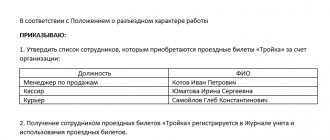On the eve of a non-working holiday
In Art. 112 of the Labor Code of the Russian Federation provides a complete list of public holidays established in the Russian Federation. In accordance with Art. 95 of the Labor Code of the Russian Federation, on the previous day the shift or work day must be shortened by exactly an hour. However, this does not affect the formation of wages in any way.
In enterprises where activities cannot be arbitrarily terminated or suspended, employees experience overtime that must be compensated. In accordance with Art. 95 of the Labor Code of the Russian Federation, in this case he is provided with monetary compensation for overtime work or additional hours of rest.
Compensation in the form of additional rest
Overtime during a shift work schedule can be compensated not only by additional pay, but also by extraordinary rest time, which corresponds to the provisions of Art. 152 Labor Code of the Russian Federation. That is, overtime hours are paid at regular rates, and unscheduled days off are not paid.
However, it must be borne in mind that compensation with increased pay is a priority - compensation by default, so to speak. If a worker wishes to receive additional rest time instead of a monetary supplement, he must inform management about this. At the same time, there was no room in the code to explain in what form a worker can communicate his desire to receive an additional day off and when this time off should be provided; HR practice shows that:
- communicate your request for additional rest time for overtime to the employee, preferably in writing, that is, in a separate application or when signing a notice of overtime work;
- the time for providing additional rest is determined by agreement between the employee and the management of the enterprise;
- the provision of additional rest time for overtime is formalized by an order or regulation of the organization.
IMPORTANT! According to Art. 152 of the Labor Code of the Russian Federation, compensation for overtime in the form of additional rest time cannot be shorter in duration than the overtime period worked. That is, for example, for 2 overtime hours an employee may be given an additional 2 hours of rest, and not a whole day off.
When is vacation paid on a non-working holiday?
According to Part 4 of Art. 112 of the Labor Code of the Russian Federation, for salaried workers, the presence of holidays in the reporting month does not affect earnings.
For workers on a different schedule, for example, for piece workers, the presence of long days off can significantly affect wages. In such cases, part 3 of Article 112 of the Labor Code of the Russian Federation for the day when no employment was carried out, non-salaried employees are provided with additional payments according to the standards established in the local regulations of the enterprise.
Calculation of overtime when working in shifts
In order to calculate the amount of additional payment for overtime during a shift change, it is first necessary to determine the number of hours worked in excess of the norm.
With the weekly accounting method, identifying hours worked in excess of the norm is quite simple. You just need to know the maximum standard for the duration of a working week for a specific employee, established by law. All hours worked above this limit will be overtime.
If the company uses cumulative accounting of work time, then in order to determine the duration of overtime it will be necessary to calculate the time worked cumulatively for the entire accounting period. This point is fundamentally important, since excessively worked hours that go beyond the norm established by law are considered overtime only at the end of the reporting period.
For example, if in a company, for employees working in shifts, time worked is calculated using the cumulative accounting method using a quarterly reporting period, with a standard 40-hour work week, the normal length of work time in the 3rd quarter of 2021 will be as follows:
- July - 168 hours;
- August - 184 hours;
- September - 176 hours;
- total - 528 hours.
Let's say an employee worked:
- in July - 160 hours;
- in August - 186 hours;
- in September - 186 hours;
- in total for the 3rd quarter - 532 hours.
Thus, the overtime duration for the 3rd quarter of 2021 for this employee is 532 − 528 = 4 hours. It is these 4 hours that should be compensated to the employee as overtime worked.
How to pay for “holiday” work
The rules are established in Part 1 of Art. 153 of the Labor Code of the Russian Federation (general provision - no less than double):
- for piece workers - no less than double piece rates;
- for employees receiving earnings at daily and hourly rates, the rate is also doubled;
- Accordingly, salaried employees are entitled to the necessary additional payment. Its size depends on whether the work was performed within or in excess of normal working hours (single daily or hourly rate and double).
Summarized working time recording - main points
Art. is devoted to the summarized accounting of time worked. 104 of the Labor Code, which defines such a method as counting working hours cumulatively during a pre-selected period. That is, work shifts on different days may be different in time and go beyond the limits established by law. Workweeks may also be unequal and beyond the maximum duration of work. In this case, summed up for a month (quarter, half-year, year), the time standard for the duration of performance of work duties must be observed and correspond to that specified in the Labor Code of the Russian Federation. The fact of using the summarized accounting method and the reporting period are established by the internal documentation of the organization.
Experienced personnel officers who use summarized accounting of hours worked when drawing up a shift schedule, as a rule, first schedule all shift changes for the desired year, and only after that, after calculating the working hours, they select the optimal accounting period. This is done in order to avoid the occurrence of overtime based on the results of the period taken as a basis, since overtime included in the schedule in advance is a violation of labor legislation.
Meanwhile, already during the work process, when calculating, excess time may be detected - hours worked by some employees in excess of the established standard. Such excess time requires special registration and additional compensation to the employee. The procedure for calculating the amount of additional payment in this case will depend on the wage system established for the organization’s shift specialists and the method of recording time worked.
Salary calculation example
In order to consolidate existing knowledge, several examples will be considered below:
- Georgy works as a packer. The total duration of his working day (shift) is twelve hours. The tariff rate per hour is 190 rubles. In May of this year, Georgy worked a total of 110 hours. In order to find out the salary of this employee, you will need to multiply the tariff rate by the number of hours worked (190 * 110 = 20,900 rubles);
- Let's say Georgy's colleague took a vacation, and therefore he was offered to work overtime. This type of employment is paid at a special rate - the first two hours at one and a half times the rate, and all subsequent hours at double the rate (compared to the daily rate). In April, Georgy worked five days overtime for three hours. In order to calculate the bonus, you will need to multiply the salary by overtime hours and by the increased rate: (190*1.5*2) + (190*2*1) = 570 + 380 = 950 rubles. Then multiply the resulting amount by the number of days when Georgy worked overtime: 950*5 = 4,750 rubles.
So, a shift work schedule can take various forms and include activity at any time of the day. Night hours, unlike daytime hours, are paid at the highest rate and are more profitable. When determining wages, accountants rely on the accounting period, which allows them to calculate the final amount of money intended for each employee.
Payment for a shift schedule
Wages at a particular enterprise are calculated to an employee based on the established wage system. Depending on this, it can be calculated in two ways.
At a set hourly rate
In this case, to determine the amount to be paid, it is necessary to multiply the rate by the number of hours actually worked by the employee. Data about this is taken from the time sheet maintained at the enterprise.
Example:
The watchman of Hercules LLC works on a shift schedule every other day, so the duration of one of his shifts is 24 hours. Payment is made based on an hourly tariff rate of 90 rubles per hour. It is necessary to calculate an employee’s salary for March if he worked all his shifts and his first working day of the month fell on March 2.
In this case, the number of work shifts is 8, the actual time worked is 192 hours. Therefore the salary is equal to:
Salary = 192 * 90 = 17,280 rub.
However, this amount is not the final amount, because the employee is also entitled to additional payment for night work, as well as for overtime work. The features of such an additional payment will be discussed further.
If in this example the employee worked on a “every two days” schedule, then the number of shifts and hours worked would be 10 and 240, respectively. In this case, the salary is an order of magnitude higher:
Salary = 240 * 90 = 21,600 rub.
In addition to additional pay for night and overtime work, an employee could also qualify for additional money for working on a holiday, since one of his shifts would fall on March 8. However, with such a schedule, there is a lot of overtime in excess of the monthly norm (168 hours), which is undesirable and in some cases may be prohibited by law.
In accordance with the salary established for the employee
In such a situation, it is paid in full, but provided that the employee has worked the standard hours established for the accounting period. If this standard is not met, the salary is proportionally reduced. In case of processing, an additional payment is due.
Example:
Employee of Jeweler LLC Koroleva M.P. works on a shift schedule from 10.00 to 21.00 daily for one week, break - from 14.00 to 15.00, the next week is non-working. Her monthly salary is set at 15,000 rubles. It is necessary to calculate the employee’s salary for April 2021 if the company keeps summarized records of working hours and the accounting period is equal to a month.
First of all, it is necessary to determine the time standard for the month in question, established using the production calendar. It is 168 hours per week, the number of working days in a month is 21 days. The employee's hourly rate is:
Emergency = 15,000 / 168 = 89.3 rubles/hour
In fact, the employee worked 16 working days. The number of hours worked in this case will be:
H = 16 * 10 = 160 hours
Since the employee did not fully work the standard time, her salary will be:
Salary = 160 * 89.3 = 14,285 rubles.
As already noted, in the event of overtime or if part of the shift coincides with night time, the employee is entitled to additional payments to his salary, the minimum amount of which is established by law.
Recruitment
Working on a day off is not considered work performed on Saturday or Sunday if the shift falls according to the schedule. But if it falls on a holiday, then payment for it must be made differently. There are often cases when, even with a shift schedule, management has to call a subordinate to work.
The basis for this is the order of the employer. There is no statutory form for such a document, so it can be drawn up in free form. The main thing is that the order contains the employee’s data, the dates when he must return to work, etc. Separately, you can formalize the consent or refusal of a subordinate to perform duties on a holiday. Some employers indicate a special column in the order where the subordinate can indicate his consent or refusal.
What does shift work mean?
The rules for establishing a shift work schedule at an enterprise are prescribed in Article 103 of the Labor Code of the Russian Federation. This schedule implies the organization of work with:
- the duration of the production process is more than the normal duration of the working day;
- organizing more appropriate use of machinery, equipment, and production space;
- the need to increase production volumes;
- organizing round-the-clock operation of trade or public service facilities;
- other production factors.
Work can be organized in two, three or four shifts. At the same time, working for two shifts in a row is prohibited.
Examples of night wage calculations
Example 1. Payment for night hours with a fixed salary
Employee Polivanov K.I. with a salary of 25 thousand rubles. per month Works on a shift schedule 5 days a week (Monday to Friday). His evening shift is from 20:00 to 04:00. According to his schedule, he has 10 such shifts per month. The local act of the enterprise establishes a 20% share of additional payment for work outside normal hours. We will calculate the amount of the surcharge.
For the accounting month Polivanov K.I. fully worked the hourly quota corresponding to the production calendar (170 hours). Night hours each shift account for 6 hours (from 22:00 to 04:00), for a month this will be 6 x 10 = 60 hours. We need to find the average hourly tariff rate: 25,000 / 170 = 147 rubles. Let's calculate the amount of the night supplement for each hour: 147 x 0.2 = 29.4 rubles. For 60 odd hours you will need to pay an additional salary of 60 x 29.4 = 1,764 rubles.
When double pay is replaced by rest
In some situations, subordinates have the right to demand time off instead of double remuneration for holidays worked. The decision in each case is individual and depends on how much time has actually been worked up to the present moment.
Such demands cannot be made only by those who usually work overtime. The same applies to the use of a shift schedule.









